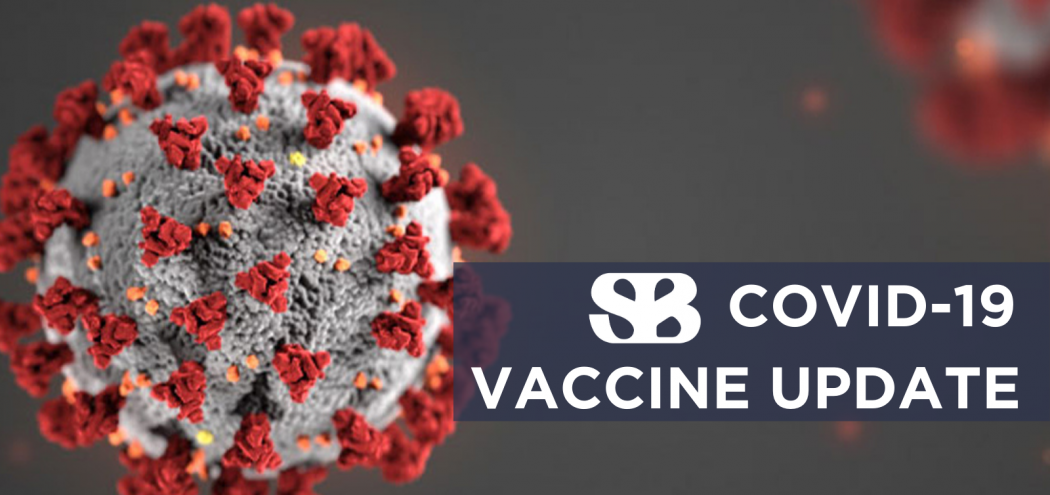
COVID-19 Update by Timothy Brei, MD, Spina Bifida Association Medical Director, Professor of Pediatrics, Division of Developmental Medicine, Seattle Children’s Hospital, Seattle, WA
August 27, 2021 – This update provides some of the latest information to help keep people with Spina Bifida and their loved ones healthy.
As the summer ends and school approaches, there has been another surge of COVID-19 infections over recent weeks. This increase in infections is due to the new “delta” variant of the COVID-19 virus. As opposed to the earlier virus variants, the “delta” variant is more easily transmitted from person to person. It has recently been shown that even people who have been fully vaccinated may be asymptomatic of a current infection and spread it to other people.
As opposed to the initial surge in COVID-19 infections, the populations getting sick and hospitalized have changed. More people in their 20s-30s are getting sick and hospitalized; in addition, more children and adolescents are being hospitalized than at any other time during the pandemic.
The current surge appears to be fueled by the relatively lower vaccination rates seen in some states and younger age groups. The states with the highest hospitalization rates are seeing the largest surge in COVID-19 infections and hospitalizations. Child cases relate to an increased ability of the virus to be transmitted between people, the lack of vaccine approval for children under 12 years of age, and whether or not the people around children have been vaccinated. The Reuters news organization just noted this week that about 1900 children were hospitalized with COVID-19 in the United States. This is the highest number of children hospitalized at any time during the pandemic.
It is important that those with compromised kidneys get vaccinated. If that individual contracts COVID, they risk acute kidney injury that could result in hospitalization, dialysis, and sometimes death.
Due to the current delta variant COVID-19 status, the Centers for Disease Control and Prevention (CDC) recommends:
1. Vaccinate, as eligible, if you haven’t done so. This is the single most important thing that can be done to stop the pandemic.
2. Individuals 2 years of age and up, mask in public indoor spaces, regardless of vaccination status.
3. People who are not fully vaccinated use masks in crowded public outdoor spaces or during sustained close contact with other people. People who are fully vaccinated may choose to wear masks in outdoor spaces if they choose, especially if they have high-risk conditions or are immune-compromised.
4. Continue to practice social distancing
5. Continue frequent handwashing
The CDC is now recommending a third dose of the Pfizer or Moderna vaccines for those who are immune-compromised to boost immune response. (Note: The US Food and Drug Administration granted full approval to the Pfizer/BioNTech Covid-19 vaccine for people age 16 and older on Monday, August 23, 2021)
The Biden administration just recommended that people receive a third vaccination of the Pfizer and Moderna vaccines to boost immunity due to the increased transmissibility of the delta COVID19 variant. This will be rolled out in a phased process, similar to when the vaccines first became available last winter.
In addition, as more children and adolescents have gotten infected, it is now understood that they can experience long-term COVID-19 symptoms, known as “COVID Long-haul,” according to the American Academy of Pediatrics (AAP). These symptoms include:
– Fatigue
– Difficulty thinking or concentrating, also known as “brain fog”
– Cough
– Trouble breathing
– Joint or muscle pain
– Chest pain
– Depression or anxiety
– Headache
– Fever
– Heart palpitations
– Loss of smell or taste
– Lightheadedness when standing up
Finally, there is the challenge of a safe return to school. We know that students benefit from in-person learning and the ability to develop social skills with peers. Online learning was challenging for many students, making a priority the safe return of students to school. Knowing this, it will be challenging for parents to make the best decisions that support a safe return to school. The CDC and the American Academy of Pediatrics recommend:
1. Vaccination is the leading public health strategy to help students safely return to school and extra-curricular activities. As many schools serve children under the age of 12 who are not eligible for vaccination at this time, using multiple prevention strategies is also necessary.
2. Universal masking of all students (age 2 and older). Experience over the last year has taught that the vast majority of children over the age of 2 can use a mask if provided appropriate instruction and support. In addition, all teachers, staff (including bus drivers and cafeteria staff), and all visitors should be masked, regardless of vaccination status.
3. Schools should maintain 3 feet of distance between students within the classroom. When this is not possible, other prevention strategies such as screening testing and contact tracing should be implemented.
4. Screening testing, ventilation, frequent handwashing, and cleaning and disinfecting should be in place.
5. Students and school personnel should stay home if they are sick and consider getting tested to exclude COVID-19 infection to provide contact tracing information. Quarantine and isolation should be utilized as needed
6. Localities should monitor community transmission, vaccine status, occurrence of outbreaks, and other information as needed to inform additional decisions
For additional information, please see the links below
- Children hospitalized with COVID-19 in U.S. hits record number | Reuters
- About COVID-19 | CDC
- Guidance for COVID-19 Prevention in K-12 Schools | CDC
- Guidance for COVID-19 | CDC
- Safe Schools During the COVID-19 Pandemic - HealthyChildren.org
- Long-Haul COVID-19 in Children and Teens - HealthyChildren.org
Recent
SBA launching Florida statewide chapter
